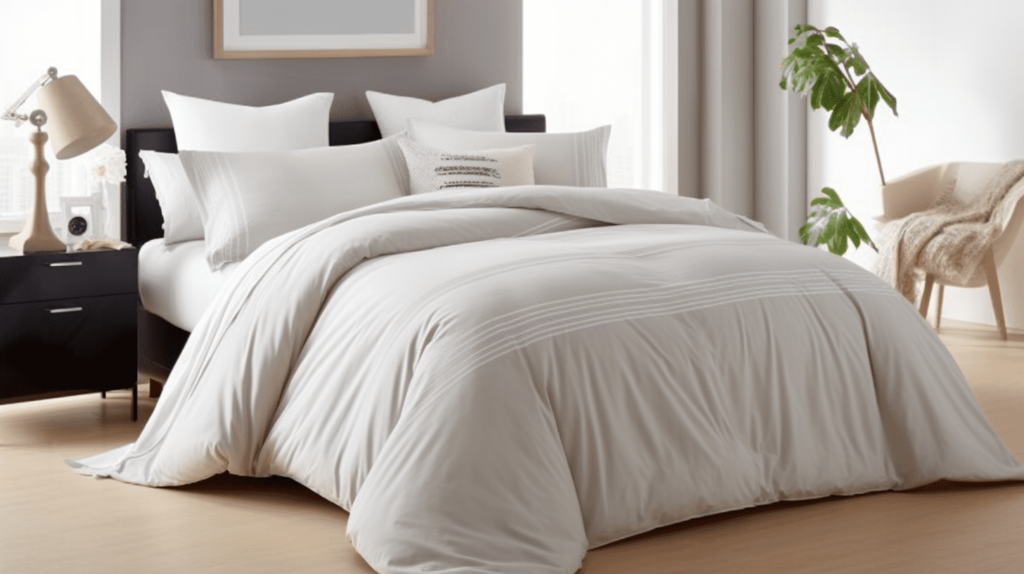
Discover how a home textile factory operates, from spinning the yarn to producing beautiful bedding sets. Learn about the processes, equipment, and people behind the scenes of this fascinating industry.
Introduction
Have you ever wondered how the bedding set you sleep in every night is made? Do you know what goes into the production of the towels you use every day? All of these products and more are made in a home textile factory. In this article, we will take a deep dive into the world of home textile factories and explore the processes, equipment, and people involved in making the products we use every day.
The Process of Making Home Textiles
1. Spinning the Yarn
The first step in making home textiles is spinning the yarn. This process involves taking raw materials, such as cotton or polyester, and turning them into yarn. The yarn can be made through a variety of methods, including ring spinning, open-end spinning, and air-jet spinning.
2. Weaving or Knitting the Fabric
Once the yarn is spun, it is woven or knitted into fabric. The weaving process involves interlacing the yarn at right angles to create a stable fabric. The knitting process involves interlocking the loops of yarn to create a stretchy fabric.
3. Dyeing and Printing
After the fabric is made, it is dyed and printed to create the desired colors and patterns. This process can be done through a variety of methods, including piece dyeing, yarn dyeing, and digital printing.
4. Cutting and Sewing
Once the fabric is dyed and printed, it is cut into the desired shapes and sizes. The pieces are then sewn together to create the finished product, such as a bedding set or a towel.
The Equipment Used in Home Textile Factories
1. Spinning Machines
Spinning machines are used to turn raw materials into yarn. These machines come in a variety of sizes and types, depending on the type of yarn being produced.
2. Weaving and Knitting Machines
Weaving and knitting machines are used to turn yarn into fabric. These machines come in a variety of sizes and types, depending on the type of fabric being produced.
3. Dyeing and Printing Machines
Dyeing and printing machines are used to add color and patterns to the fabric. These machines come in a variety of sizes and types, depending on the method of dyeing and printing being used.
4. Cutting and Sewing Machines
Cutting and sewing machines are used to cut the fabric into the desired shapes and sizes and then sew the pieces together to create the finished product.
The People Behind the Scenes
1. Designers
Designers are responsible for creating the patterns and designs that are printed onto the fabric. They work closely with the manufacturers to ensure that the designs can be produced efficiently.
2. Engineers
Engineers are responsible for designing and maintaining the equipment used in the home textile factory. They ensure that the machines are running smoothly and that any issues are quickly resolved.
3. Operators
Operators are responsible for running the machines used in the home textile factory. They are trained to operate the equipment safely and efficiently.
4. Quality Control Inspectors
Quality control inspectors are responsible for ensuring that the finished products meet the quality standards set by the manufacturer. They inspect the products for defects and ensure that they meet the required specifications.
FAQs
- What types of products are made in a home textile factory?
Home textile factories produce a wide variety of products, including bedding sets, towels, curtains, tablecloths, and many more.
- How long does it take to produce a bedding set?
The time it takes to produce a bedding set varies depending on the size and complexity of the set, as well as the equipment and processes used in the factory. However, on average, it can take anywhere from a few hours to a few days to produce a single bedding set.
- What are the most common types of yarn used in home textile factories?
The most common types of yarn used in home textile factories are cotton and polyester. However, other materials, such as silk and wool, may also be used for more specialized products.
- How important is quality control in home textile factories?
Quality control is crucial in home textile factories to ensure that the products meet the desired quality standards and are safe for consumers to use. Quality control inspectors play a vital role in ensuring that any defects or issues are caught early in the production process.
Conclusion
The home textile factory industry plays a vital role in producing the products we use every day, from bedding sets to towels and more. The intricate processes, specialized equipment, and dedicated people behind the scenes ensure that these products are of high quality and meet the standards set by the manufacturers. As consumers, it’s important to appreciate the work that goes into producing these products and to choose reputable brands that prioritize quality and safety in their manufacturing processes.




